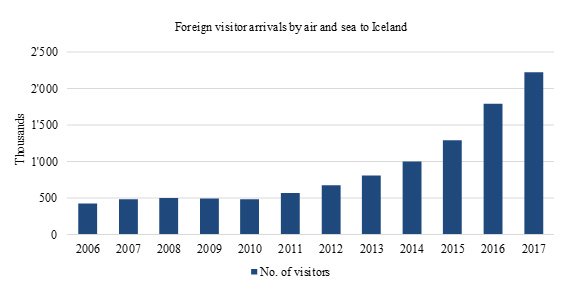Case Study – The 2010 eruption of Eyjafjallajökull
Background Information
Location: Eyjafjallajökull is located in southern Iceland.
Level of Development in Iceland: Iceland is a developed country with a strong economy. It has advanced infrastructure, healthcare, education, and a high standard of living.
Volcano Details: Eyjafjallajökull is a composite (stratovolcano) covered by an ice cap. The name describes the volcano, with Eyja meaning island, fjalla meaning mountain, and jokull meaning glacier. You can find out how to pronounce Eyjafjallajokull on the BBC website.
Its eruption can cause significant ash plumes and glacial meltwater floods known as “jökulhlaups.”
What caused the eruption of Eyjafjallajökull?
Iceland is situated on the Mid-Atlantic Ridge, a constructive plate boundary that divides the North American Plate from the Eurasian Plate. These two tectonic plates gradually drift apart because of the ridge push exerted along the Mid-Atlantic Ridge. As they move away from each other, magma from beneath the Earth’s crust fills the magma chambers located below Eyjafjallajökull. The interconnection of several of these chambers has created a substantial reservoir of magma beneath the volcano. Eyjafjallajökull is positioned underneath a glacier, adding to its complex structure.
What were the primary effects of the eruption of Eyjafjallajökull?
- Ash Cloud: The eruption created a massive ash cloud that turned day to night. The ash drifted over Europe.
- Air Travel Disruption: Over 100,000 flights were cancelled, affecting around 10 million travellers.
- Local Flooding: Melting glaciers caused flooding in the nearby areas.
- Damage to Agriculture: Ash fall led to the loss of grazing areas and contaminated water supplies.
- Property and roads: Homes and roads were damaged.
What were the secondary effects of the eruption of Eyjafjallajökull?
- Economic Impact: The airline industry alone lost £130 million a day due to airspace closure, totalling an estimated $1.7 billion. The price of shares in major airlines dropped between 2.5-3.3% during the eruption. Other sectors, such as tourism and farming, were also significantly affected.
- Environmental Impact: Long-term effects on soil and water quality were observed. Local water supplies were contaminated with fluoride.
- Health Concerns: Respiratory issues were reported due to fine ash particles in the air.
- Impacts on Kenya: The impact was felt as far afield as Kenya, where farmers laid off 5000 workers after flowers and vegetables rotted at airports. Kenya’s flower council says the country lost $1.3m daily in lost shipments to Europe.
What were the immediate responses to the eruption of Eyjafjallajökull?
- Evacuation: Around 800 people were evacuated from the immediate vicinity.
- Airspace Closure: European airspace was closed for several days.
- Emergency Services: Immediate response from local authorities, firefighters, and rescue teams.
What were the long-term responses to the eruption of Eyjafjallajökull?
- Monitoring and Research: Improved monitoring systems and research into ash cloud movement.
- Economic Support: Financial assistance for affected farmers and businesses.
- Regulations: Improved regulations for air travel during volcanic ash events.
- Airspace: The European Union developed an integrated structure for air traffic management. As a result, nine Functional Airspace Blocks (FABs) will replace the existing 27 areas. This means following a volcanic eruption in the future, areas of air space may be closed, reducing the risk of closing all European air space.
What opportunities did the eruption of Eyjafjallajökull bring?
Despite the challenges brought about by the eruption of Eyjafjallajökull, several benefits emerged from the event. One of the positive impacts was the environmental saving; the grounding of European flights during the eruption prevented the release of approximately 2.8 million tonnes of carbon dioxide into the atmosphere, as the Environmental Transport Association noted.
Additionally, the disruption in air travel led to a boon for other modes of transportation. Eurostar, for instance, experienced a significant increase in passenger numbers. The company recorded nearly a third rise in travel, accommodating 50,000 extra passengers on trains during this period.
Furthermore, the volcanic ash from Eyjafjallajökull deposited dissolved iron into the North Atlantic Ocean. This led to a plankton bloom, enhancing biological productivity in the region.
In response to the eruption’s negative publicity, the Icelandic government initiated a campaign to bolster tourism. The “Inspired by Iceland” initiative was launched with the specific goal of showcasing the nation’s scenic beauty, the warmth of its people, and the reassurance that Iceland was ready to welcome visitors. Consequently, the campaign had a positive effect, as evidenced by a substantial increase in tourist numbers, as depicted in the graph below.
How does Iceland prepare for volcanic eruptions, and what was its impact?
Iceland has an effective monitoring system for its active volcanoes, with seismic stations and other instruments. There is close cooperation between meteorological, geological, and civil protection authorities. Public education and emergency planning are also vital to Iceland’s preparation strategy.
Iceland’s preparedness and rapid response, such as evacuating the area close to the volcano, mitigated the local impact of the eruption. However, the unprecedented disruption to air travel highlighted the need for better international coordination and understanding of volcanic ash’s effects on aviation.
Conclusion
The eruption of Eyjafjallajökull in 2010 is a crucial example of how a volcanic event can have local and global impacts. The incident underscored the importance of preparedness, monitoring, and international cooperation in minimizing the effects of such natural disasters. It also highlighted the interconnectedness of our modern world and how a geological event in one country can have far-reaching consequences.
Summary
Flashcards
Check Your Knowledge
Coming soon

